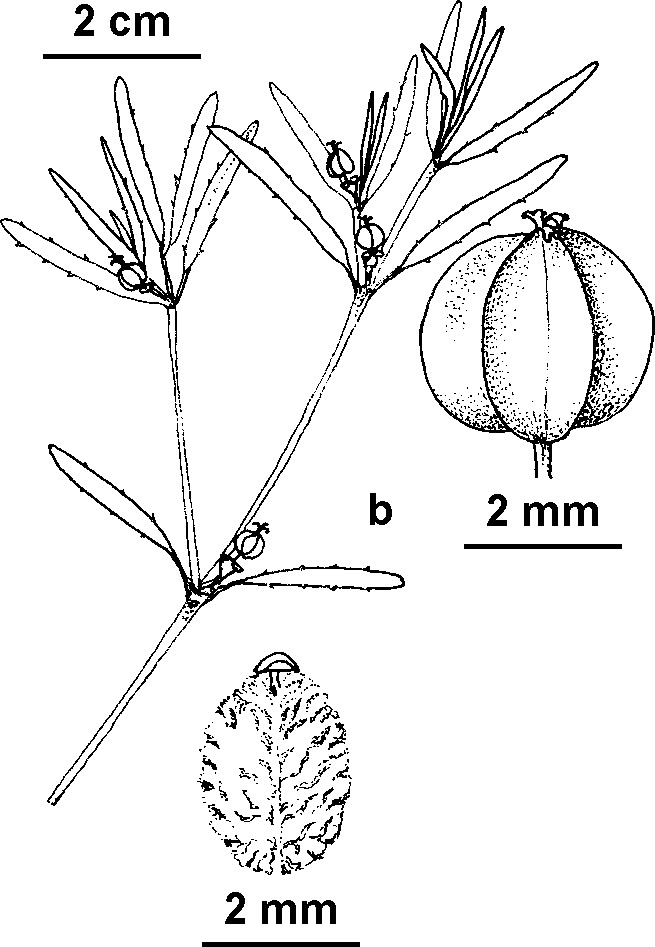Euphorbia planitiicola
D.C.Hassall Plains SpurgeErect annual or perennial subshrub mostly 30–50 cm high; stems slender, branching dichotomously, usually leafless below. Leaves almost opposite in upper parts, linear to narrow-lanceolate, 5–50 mm long, 1–5 mm wide, apex obtuse, base attenuate, margins denticulate distally; petiole to c. 5 mm long; stipules apparently absent. Cyathia solitary, terminal or upper-axillary; peduncles to c. 1 mm long; involucre campanulate, to c. 1 mm long; glands ovate, c. 0.5 mm long, yellow, margins entire; male flowers 4 or 5 per fascicle at anthesis; female flowers with styles entire, capitate. Capsule depressed-globose, c. 3 mm long, c. 3.5 mm wide, erect, keeled, smooth, green; seeds more or less ovoid, to c. 2.5 mm long, deeply pitted and reticu-late, dark blue-green, caruncle small, thin, concavo-convex, sessile. Flowers throughout the year.
MuM, VRiv, MSB. Also SA, Qld, NSW. Known in Victoria only from near Boort, Inglewood, Kerang and Lake Wallawalla, where found on seasonally wet, cracking clay soils.
The epithet has been widely spelt 'planiticola', but the original spelling has been reinstated.
Jeanes, J.A. (1999). Euphorbiaceae. In: Walsh, N.G.; Entwisle, T.J., Flora of Victoria Vol. 4, Cornaceae to Asteraceae, pp. 55–82. Inkata Press, Melbourne.
 Spinning
Spinning